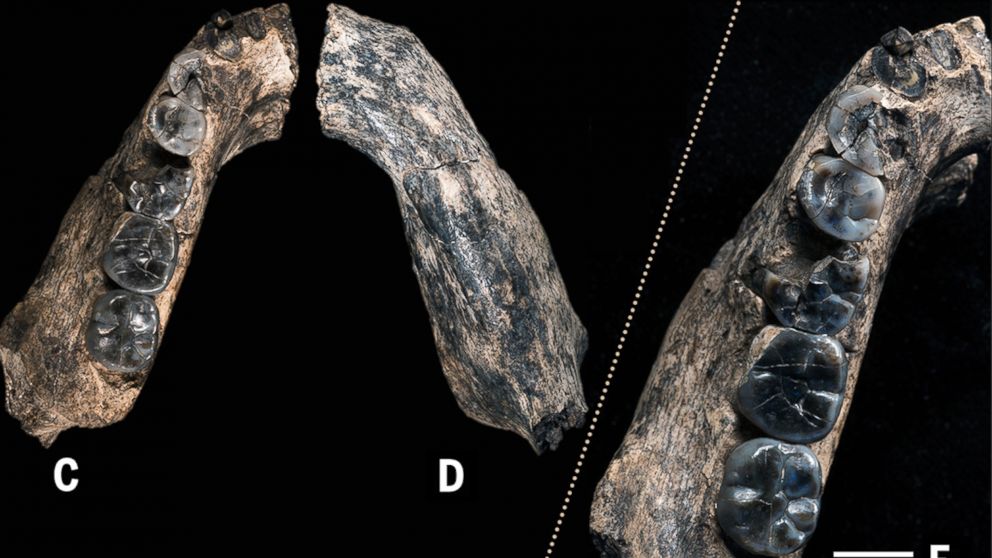Jawbone Fossil Sheds New Light on the First Humans
The 2.8 million year old fossil was discovered in Ethiopia.

— -- A 2.8 million year old jawbone fragment discovered in Ethiopia is shedding new light on a period of evolution that has long remained a mystery to anthropologists.
The fossil dates back to a time when Homo, the branch humans descended from, split from their ape-like ancestors.
The timing is significant because it gives scientists a better picture of what the first humans may have looked like and narrows a gap in the fossil record.
A report about the discovery was published in the journal "Science."
The fossil is from the left lower jaw of an adult and includes five teeth. The fragment shows that early humans had a primitive, sloping chin shape linking them to Australopithecus afarensis, the species made famous by the discovery of the Lucy fossil.
What is different are the slim molars and evenly proportioned jaw -- providing scientists with a glimpse at a key turning point in the evolutionary history of humans.
"In spite of lot of searching, fossils on the Homo lineage older than 2 million years ago are very rare," Brian Villmoare, an anthropologist at the University of Nevada-Las Vegas and lead author of the article said in a statement. "To have a glimpse of the very earliest phase of our lineage's evolution is particularly exciting."




